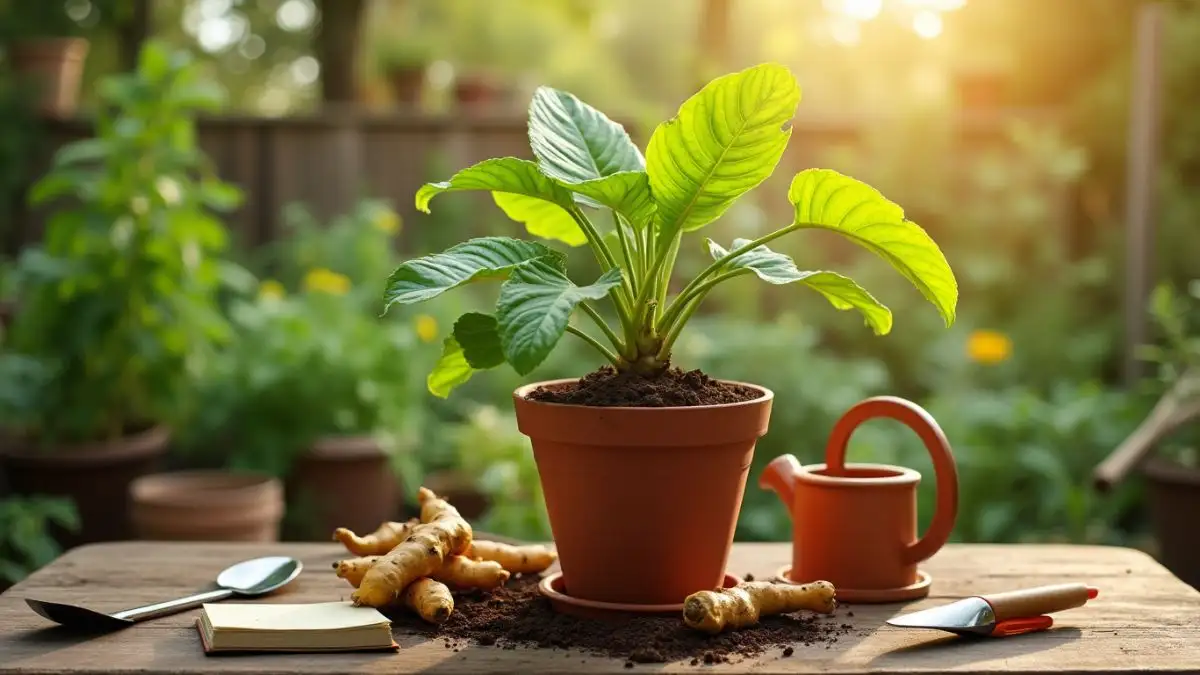Growing your own turmeric is not only rewarding but also a fantastic way to ensure you have a fresh, organic supply of this superfood right at your fingertips. Whether you’re a seasoned gardener or a beginner, this guide will walk you through everything you need to know about turmeric plant cultivation. From choosing the right variety to harvesting and storing your crop, we’ve got you covered. Let’s dive in!
Table of Contents
Understanding Turmeric Plant Basics
Before you start growing turmeric, it’s essential to understand the basics. Turmeric, scientifically known as Curcuma longa, is a rhizome, not a root. It thrives in warm, humid climates and requires well-draining soil and indirect sunlight.
Key Requirements for Turmeric Plant Cultivation
- Climate: Turmeric prefers temperatures between 68°F and 86°F (20°C to 30°C).
- Soil: The ideal soil is loamy, well-draining, and enriched with organic matter.
- Sunlight: Partial shade or indirect sunlight works best.
- Watering: Ensure the soil remains evenly moist at all times, but be careful not to overwater and cause waterlogging.
If you reside in a colder region, there’s no need to fret! Growing turmeric in an indoor pot is still an option for you.
Choosing the Right Turmeric Variety
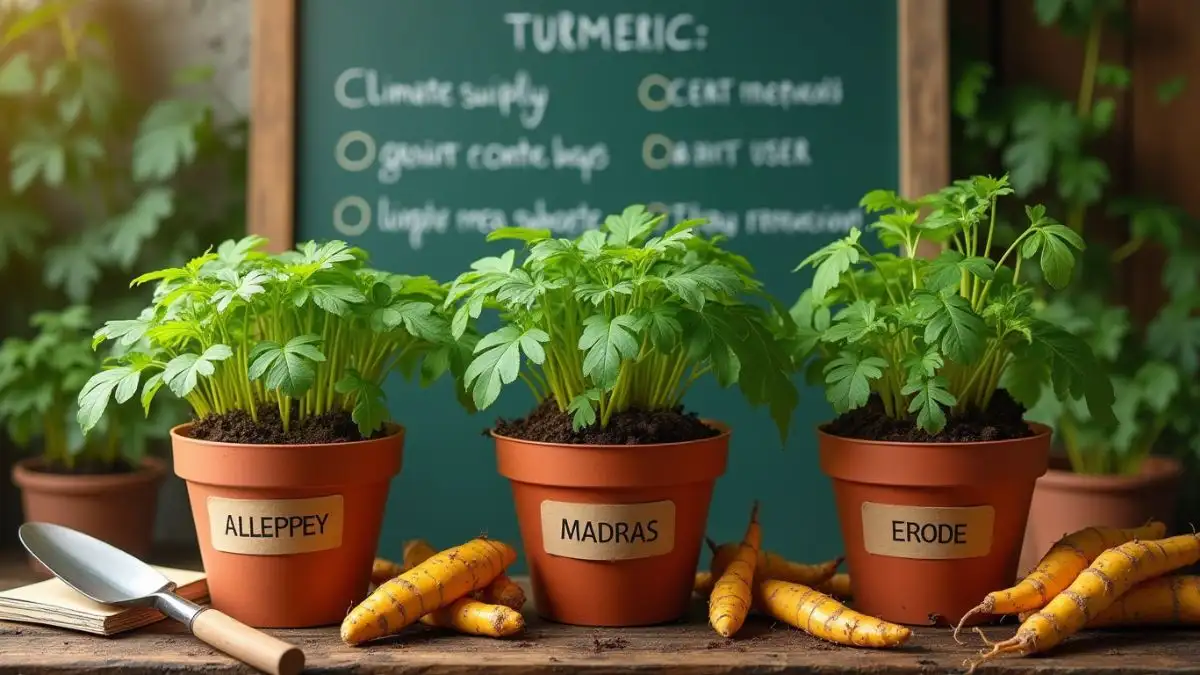
Not all turmeric varieties are the same. Some are better suited for culinary use, while others are prized for their medicinal properties. Here’s a quick guide to help you choose the right variety for your needs:
Popular Turmeric Varieties
| Variety | Climate Suitability | Best Use | Growth Duration |
| Alleppey | Tropical | Culinary | 8-10 months |
| Madras | Subtropical | Medicinal | 7-9 months |
| Erode | Warm Temperate | Culinary/Medicinal | 9-11 months |
For example, if you’re growing turmeric for cooking, the Alleppey variety is an excellent choice. On the other hand, if you’re interested in its health benefits, Madras turmeric might be more suitable.
Step-by-Step Guide to Planting Turmeric
Now that you’ve chosen your turmeric variety, it’s time to get your hands dirty! Here’s a step-by-step guide to how to cultivate turmeric:
1. Selecting Rhizomes
Choose healthy, organic turmeric rhizomes from a reliable source. Look for plump rhizomes with multiple buds or “eyes.”
2. Preparing the Soil
Turmeric thrives in well-draining soil. Mix your garden soil with compost or organic matter to enrich it. If you’re growing turmeric in a pot, use a high-quality potting mix.
3. Planting Depth and Spacing
Plant the rhizomes 2-4 inches deep and 12-16 inches apart. This spacing ensures the plants have enough room to grow.
4. Watering
After planting, water the soil thoroughly. Turmeric needs consistent moisture, so water regularly but avoid overwatering.
5. Mulching
Apply a layer of mulch to help maintain soil moisture and stabilize temperature. This step is especially important in hotter climates.
Caring for Your Turmeric Plant
Growing turmeric is relatively low-maintenance, but it does require some care to thrive. Here are some essential tips:
Watering
Turmeric loves moisture, but too much water can lead to root rot. Water the plant once the top inch of soil has dried out.
Fertilizing
Use organic fertilizers like compost or worm castings every 4-6 weeks. This will supply the essential nutrients required for your turmeric to thrive and stay healthy.
Pest Control
Watch for typical pests such as spider mites and aphids. If you notice any, use neem oil as a natural remedy.
Sunlight
Turmeric prefers partial shade, especially in hotter climates. If you’re growing turmeric in a pot indoors, place it near a window with indirect sunlight.
Harvesting and Storing Turmeric
After 8-10 months, your turmeric will be ready to harvest. Here’s how to do it:
Signs Your Turmeric is Ready
- The leaves turn yellow and dry.
- The plant stops growing.
Harvesting Process
- Carefully unearth the rhizomes with the help of a garden fork.
- Shake off the soil and clean the rhizomes.
- Let them dry in a shaded, cool spot for several days.
Storing Turmeric
- Fresh Turmeric: Store in the refrigerator for up to 2 weeks.
- Dried Turmeric: Grind into powder and store in an airtight container.
- Frozen Turmeric: You can freeze entire rhizomes for as long as six months.
Common Problems and Solutions in Turmeric Cultivation
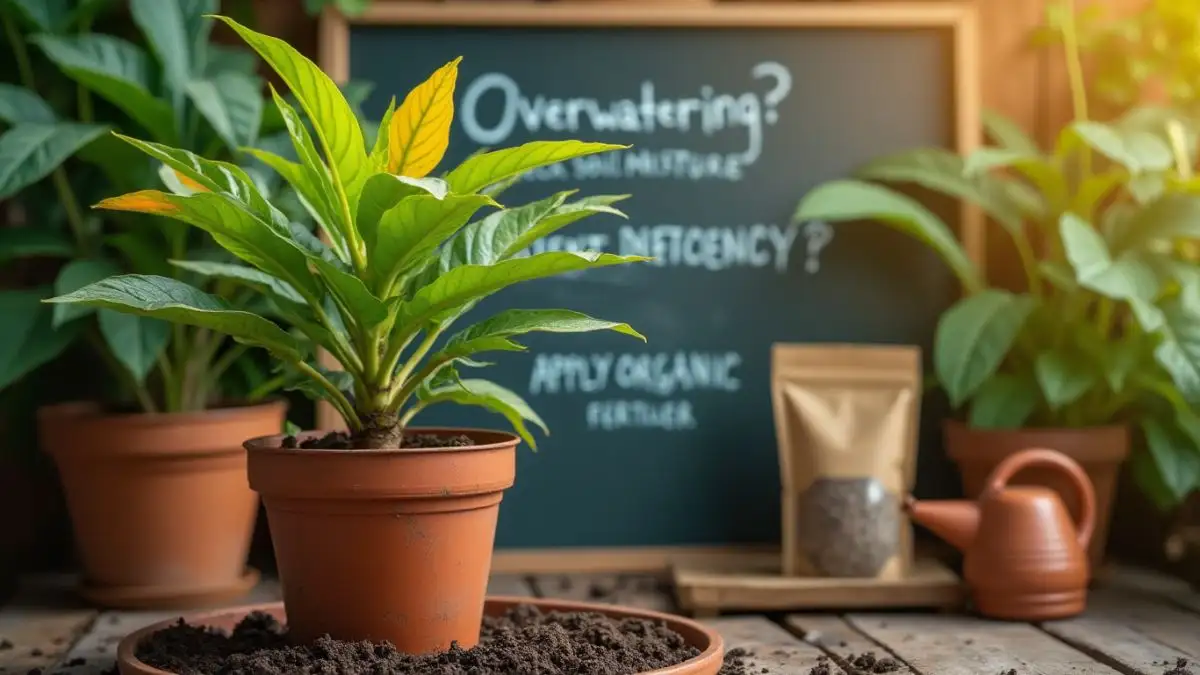
Despite providing excellent care, you could still face some challenges. Here’s how to troubleshoot common problems:
Yellowing Leaves
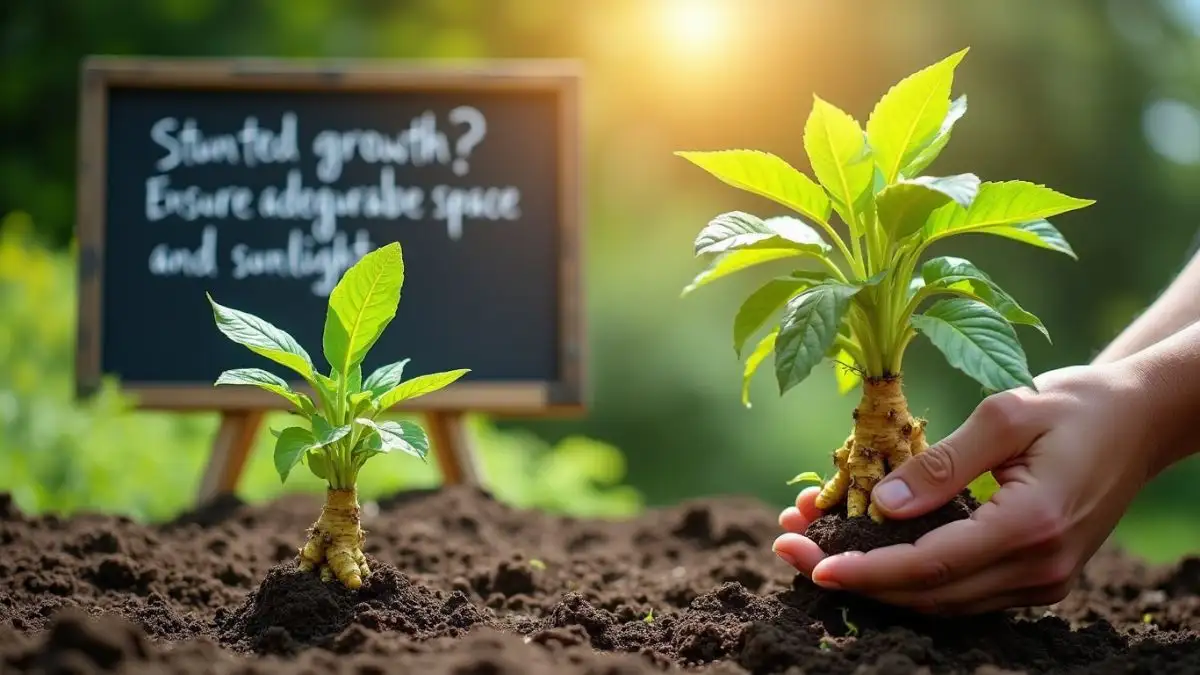
This might indicate either overwatering or a lack of nutrients. Monitor the soil’s moisture level and apply organic fertilizer if necessary.
Stunted Growth
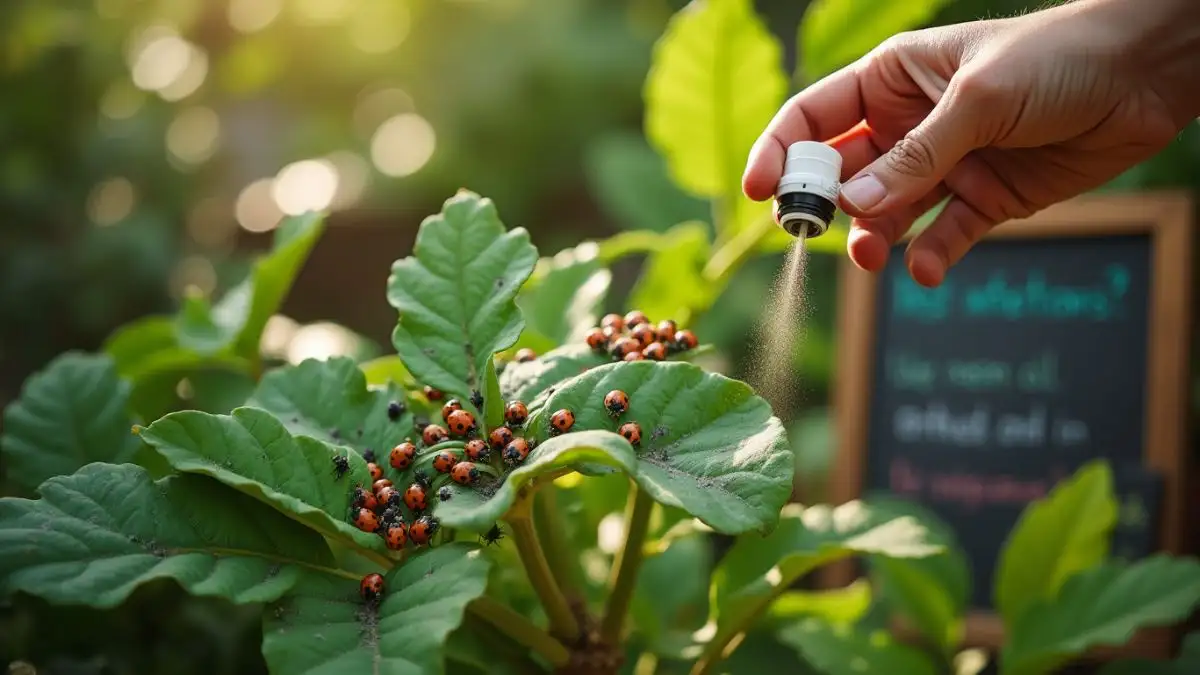
Make sure your turmeric plants receive adequate space and sunlight. Plants that are too close together may result in hindered growth.
Pest Infestations
Spider mites and aphids are common pests. Use neem oil or introduce beneficial insects like ladybugs to control them.
Benefits of Growing Your Own Turmeric
Why go through the trouble of growing turmeric at home? Here are some compelling reasons:
Health Benefits
Turmeric is rich in curcumin, a compound celebrated for its anti-inflammatory and antioxidant benefits.
Cost-Effective
Growing your own turmeric is cheaper than buying organic turmeric from the store.
Environmental Benefits
By growing your own spices, you reduce your carbon footprint and contribute to a healthier planet.
Creative Uses for Homegrown Turmeric
Turmeric isn’t just for cooking! Here are some creative ways to use your homegrown turmeric:
Golden Milk Recipe
- Ingredients: Turmeric, milk, honey, cinnamon.
- Instructions: Mix ingredients and heat gently.
Turmeric Face Mask
- Ingredients: Turmeric, yogurt, honey.
- Instructions: Apply to your face, leave for 15 minutes, and rinse.
Natural Dye
- Ingredients: Turmeric, water, fabric.
- Instructions: Boil turmeric, soak the fabric, and let it dry.
Companion Planting with Turmeric
Companion planting can enhance your turmeric’s growth and protect it from pests. Here are some ideal companion plants:
Ginger
Ginger and turmeric have similar growing conditions and can be planted together.
Lemongrass
Lemongrass acts as a natural pest repellent.
Garlic
Garlic deters pests and improves soil health.
Turmeric in Different Climates
Turmeric can be grown in various climates with a few adjustments:
Tropical Climates
Turmeric thrives in tropical climates with minimal adjustments.
Subtropical Climates
Provide partial shade and mulch heavily to retain moisture.
Temperate Climates
Grow turmeric in pots indoors or in greenhouses to maintain warm temperatures.
Conclusion: Start Your Turmeric Plant Cultivation Journey Today
Growing turmeric is more than just a gardening project—it’s a journey that connects you to nature, your health, and your kitchen. By following the 5 essential tips for turmeric plant cultivation outlined in this guide, you’ll be well-equipped to grow your own fresh, organic turmeric, no matter where you live. Whether you’re planting turmeric in your backyard, in containers on your balcony, or even indoors, the process is simple, rewarding, and deeply satisfying.
Imagine the pride of harvesting your own turmeric rhizomes, knowing they’re free from chemicals and packed with flavor and health benefits. Picture yourself adding freshly ground turmeric to your favorite recipes, brewing a cup of golden milk, or even creating natural remedies and beauty products. The possibilities are endless when you grow your own turmeric.
Not only does turmeric plant cultivation provide you with a steady supply of this incredible superfood, but it also offers a sense of accomplishment and self-sufficiency. You’ll save money, reduce your environmental impact, and gain a deeper appreciation for the food you consume. Plus, the vibrant green leaves and lush foliage of the turmeric plant can add a touch of tropical beauty to your garden or home.
So, what are you waiting for? Whether you’re a seasoned gardener or a complete beginner, now is the perfect time to start your turmeric plant cultivation journey. Gather your supplies, choose your favorite turmeric variety, and follow the steps in this guide. With a little patience and care, you’ll soon be harvesting your own turmeric and enjoying its countless benefits.
Remember, gardening is a learning process, and every step you take brings you closer to success. Don’t be afraid to experiment, ask questions, and share your experiences with fellow gardeners. The joy of growing your own food is unmatched, and turmeric is one of the most rewarding plants you can cultivate.
Take the first step today. Your future self—and your kitchen—will thank you. Happy gardening, and may your turmeric plant cultivation journey be as vibrant and fulfilling as the spice itself!
FAQ Section
1. What is the best time to plant turmeric?
Plant turmeric in early spring when the soil is warm.
2. Can I grow turmeric indoors?
Yes, turmeric can be grown in pots indoors with adequate sunlight.
3. How long does it take to grow turmeric?
Turmeric takes 8-10 months to mature.
4. What are the common pests in turmeric cultivation?
Spider mites and aphids are common; use neem oil for control.
5. Can I use store-bought turmeric for planting?
Yes, but ensure it’s organic and untreated with growth inhibitors.
6. How often should I water my turmeric plant?
Water consistently to maintain soil moisture without causing waterlogging.
7. What type of soil is best for turmeric?
The perfect soil is loamy, well-draining, and abundant in organic matter.
8. Can turmeric grow in cold climates?
Turmeric prefers warm climates but can be grown in pots indoors in colder regions.
9. How can I determine when my turmeric is ready for harvesting?
Harvest when the leaves turn yellow and dry, usually after 8-10 months.
10. What are the health benefits of fresh turmeric?
Fresh turmeric is rich in curcumin, which has anti-inflammatory and antioxidant properties.
By following this guide, you’ll not only master turmeric plant cultivation but also enjoy the satisfaction of growing your own superfood. Happy gardening!


